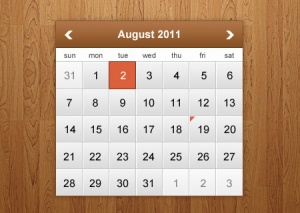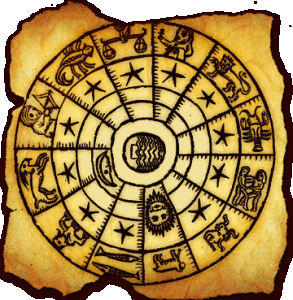Tags
astro201, babylonian, blog3, calendar, egyptian, gregorian, history, leap year, month, roman, week, year
Most of us have calendars hung in our kitchens or virtual apps constantly berating us with times, dates, and upcoming holidays. But have you ever stopped to think about where calendars came from or why our society relies so devotedly on them? How did we decide to divide our time that way? Why did we all agree on the same calendar?
Modern Gregorian Calendar (Web Design Tunes)
Calendars were first used in the time of the Ancient Egyptians and Babylonians to help predict changes in weather, especially for the purpose of agriculture. Ancient farmers noticed that flooding or dry spells tended to happen over and over again, with equally spaced time in between each occurrence. If they could tell when floods or heavy rains would hit, farmers could prepare to irrigate this water efficiently to crops or to save it to use during subsequent droughts. Of course, it was hard to map out exactly when these events would occur, so ancient civilizations looked to patterns that were a little more reliable – the movement of the stars.
The Egyptians were the first to see that constellations, groups of stars seen with the naked eye, moved around the sky in predictable patterns. The twelve constellations that we think of as Zodiac signs even seemed to chase each other in a circle around the sky. The time that it took for one of these constellations to return to the same place in the sky (at the same time of night) was classified as a year. Years were subsequently divided into twelve months of thirty days each.
The Babylonians, existing shortly after the time of the Egyptians, went on to define the month as the time between identical crescent moons. It was at this point that the calendar became lunisolar – relying on patterns of motion of the Sun and Moon through the sky (See different types of calendars here. The next major calendar to come into play was that of the Romans. Its most important additions included February as a twenty-eight day month, the division of months into weeks of seven days, and the proclamation that leap years would occur every four years to keep the calendar in line with Earth’s revolutions around the Sun, which take about 365 days and 6 hours (See here for more about leap years). At this point, the calendar was important not only to keep track of agricultural patterns but also to sustain the logistics of an expanding economy, which reached from Rome to other parts of Europe, Africa, and Asia. (See Time Center’s History of the Western Calendar or Exovedate for more about the Roman calendar.)
The most recent calendar used in the Western world is the Gregorian calendar, which was endorsed by Pope Gregory XIII in 1582. It includes the omission of three leap days every four hundred years to account more exactly for Earth’s revolution around the Sun, which is really about ten minutes short of 365 days and 6 hours. The Gregorian calendar is the official calendar in Europe and in most parts of the world. However, other calendars are used by various cultures. For example, the Chinese calendar varies in number of days per year and adds a thirteenth month for leap years. Many Islamic calendars rely on local observations of moon cycles, which can vary slightly depending on the weather and the location of the observer, so they are not constant among regions or countries. For a list of more calendars in use today, see here.
Ancient Julian Calendar as used in Rome (Hotel Rome)



You must be logged in to post a comment.